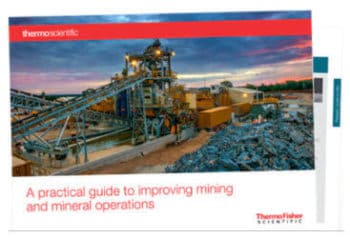 Our sister blog, Analyzing Metals, published a useful article last week regarding the importance of maintaining your XRF instrument, including checking calibrations every year, to ensure they will correctly determine the elemental composition of materials. The accuracy of this technology is especially important in mining where you need to maximize your exploration budgets, pre-screen laboratory samples, identify drill targets quickly, reduce re-mobilization costs, and get an accurate report to the capital markets as fast as possible.
Our sister blog, Analyzing Metals, published a useful article last week regarding the importance of maintaining your XRF instrument, including checking calibrations every year, to ensure they will correctly determine the elemental composition of materials. The accuracy of this technology is especially important in mining where you need to maximize your exploration budgets, pre-screen laboratory samples, identify drill targets quickly, reduce re-mobilization costs, and get an accurate report to the capital markets as fast as possible.
XRF analyzers determine the chemistry of a sample by measuring the fluorescent (or secondary) x-ray emitted from a sample when it is excited by a primary x-ray source. Each of the elements present in a sample produces a set of characteristic fluorescent x-rays (“a fingerprint”) that is unique for that specific element, which is why XRF spectroscopy is an excellent technology for qualitative and quantitative analysis of material composition.
Portable analyzers allow you to take assay analyses in real time, and can be used in mine mapping, ore grade control, and environmental compliance. and the exploration and mining of a wide variety of base metals, precious metals, rare earth elements, mineral fuels, industrial minerals, and gas-bearing strata samples.
But the instrument must be precisely calibrated in order to ensure the results are accurate. Read the article to see why re-calibration is needed on an annual basis. You need your results immediately, so make sure they are accurate as well.
Editor’s Note: If you own a Thermo Scientific Niton XRF portable analyzer, contact 1-800-875-1578 or 1-978-670-7460 to discuss the Annual Calibration & Certification program with the Technical Support team to get your analyzer calibrated and certified.”






Leave a Reply